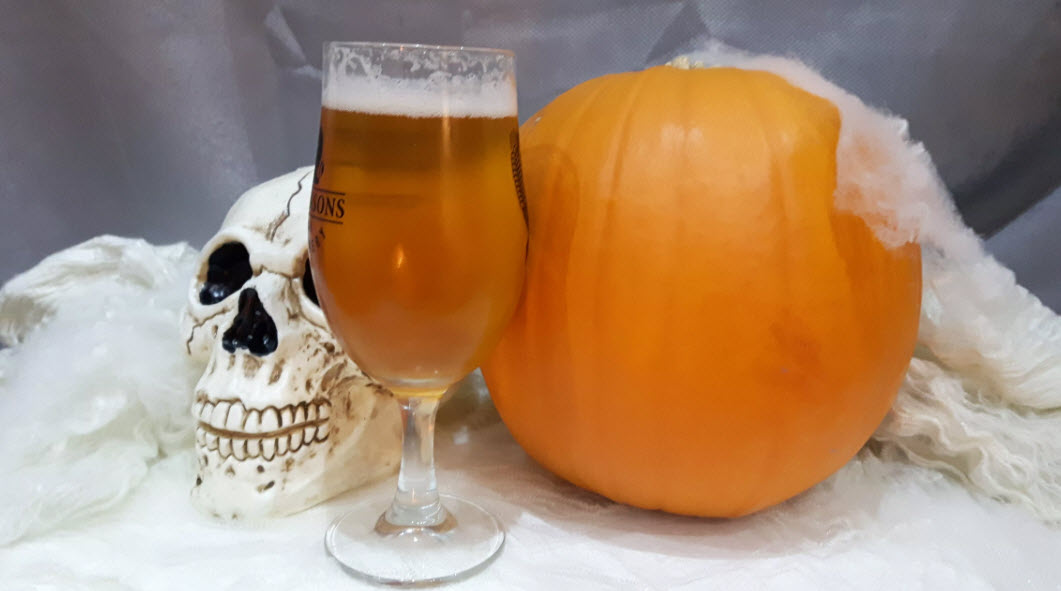It’s October, it’s nearing Halloween and that can only mean one thing… Pumpkin beers are on their way.
Love them or hate them, pumpkin beers have been massive. The revival (because pumpkin beers are a very old style) started in the 1980s and is credited to Buffalo Bill’s Brewery. Unlike the original colonial recipes, the commercial beer produced at Buffalo Bill’s used pumpkin pie spices rather than actual pumpkin in the recipe.
From there, pumpkin beers grew to a point that they rival IPA sales when they are released. The Great American Beer Festival has a separate category for homebrewers entering pumpkin beers into their competition!
But with the rise in popularity has also come a wave of people who hate pumpkin beers. The idea of a pumpkin flavour in beer doesn’t appeal or the fact that a lot of breweries use pie spices makes it inauthentic or they just don’t like how popular they become.
Regardless of your feelings on them, pumpkin is a difficult flavour to get into beer and there is something to be learned from brewing this style. Plus, it’s a beer you may not traditionally do and there is always value in brewing outside of your comfort zone!
So, how do you brew a pumpkin beer?
The first thing to decide is how you plan to impart pumpkin flavour into your beer. Pumpkin is very subtle so being able to get the flavour is difficult and if you’re using fresh pumpkin you will require a lot (at least 2kg or 4lbs in 23 litres). Carving pumpkins which become widely available in the run-up to Halloween are actually not much good for brewing. They are grown to be largely hollow so you don’t get a lot of pumpkin flesh which is what you want. If you’re using real pumpkins look for pie pumpkins or if you can’t get a hold of these you may be best to use canned pumpkins. Be sure to check that the product in the can is just ‘pumpkin’ though as there may be other ingredients that are of no use.
Alternatively, many ‘pumpkin’ beers actually use spices that you would find in a pumpkin pie to replicate that flavour, rather than using any actual pumpkin. These spices include allspice, nutmeg, vanilla, cloves and cinnamon. As pumpkin is a hard flavour to get right, using spices can be a useful method for creating a likeness of pumpkin pie. An approximation of pumpkin rather than the actual fruit.
If you are using actual pumpkin then you should halve it, bake it and then scoop the flesh away from the skin before mashing the flesh. This mashed flesh can then be added to the mash, during the boil (although you should add it late in the boil to avoid driving off aroma and flavour) or into secondary fermentation. As always when adding fruit be aware that this introduces more sugar so fermentation may pick up again and you need to wait for fermentation to stop before packaging your beer.
If you are using spices then again you can add these at any point in the boil but the closer to the end of the boil you add them the more flavour you are likely to retain in the final beer. In terms of how much spice to add remember that less is usually more (you can always add later) and it is hard to judge the effect, your additions will have on the unfinished beer. Start with a ¼ teaspoon as a rough guide for most spices or if it’s particularly strong even half that. If you don’t want to add the spices during the boil, stir them in to high ABV spirit such as vodka. This can be useful for working out additional volumes as you can add small increments and scale up as required.
Many brewers use a mix of techniques, adding real pumpkin flesh to their mash and boil and then pumpkin pie spices during fermentation. This is good for adding a bit of complexity to your beer and will ensure you get pumpkin flavour in your beer.
If you are a traditionalist then pumpkin should be added to pale coloured, low hopped beers but darker beers, such as stouts, carry the flavours well thanks to their maltiness and complexity. Two possible recipes for a pumpkin ale would be;
Pale Pumpkin Ale
OG: 1.066
FG: 1.017
ABV: 6.50%
IBU: 21.38
SRM: 9.43
Boil Gravity: 1.053
Fermentables
4kg (8.8lb) Maris Otter
1.15kg (2.55lb) Light Crystal
0.85kg (1.85lb) Wheat malt
0.55kg (1.2lb) Carapils
Hops
15g (0.5 oz) East Kent Golding @ 60 minutes
20g (0.7 oz) Progress @ 60 minutes
Yeast
Mangrove Jacks M44 US West Coast
Additions
Add the following at the end of the boil;
7g (0.25 oz) Allspice
2g (0.07 oz) Pumpkin pie spice
2g (0.07 oz) Cinnamon
Add 2kg (4 lbs) of baked and peeled pumpkin flesh to the secondary fermenter and allow fermentation to finish fully before bottling.
Pumpkin Dark Ale
OG: 1.076
FG: 1.019
ABV: 7.48%
IBU: 38.84
SRM: 36.59
Boil Gravity: 1.056
Fermentables
4kg Maris Otter
1kg Vienna
0.9kg Rolled Oats
0.45kg Crystal
0.45kg Chocolate
0.227kg Roasted Barley
Hops
40g East Kent Goldings @ 60 minutes
30g Fuggles @ 60 minutes
Yeast
Mangrove Jacks M15 Empire Ale Yeast
Additions
Take 1.3kg (3 lbs) of pumpkin flesh, coat lightly in brown sugar and bake at 180°C (356°F) until caramelised. Carefully mash the pumpkin. Mash in your malts as usual at 45°C (113°F) for 20 minutes and then raise your temperature to 68°C (154°F). Once you reach this temperature, add your pumpkin and mash for 60 minutes.
Using vodka, create a tincture of the following spices;
1 cinnamon stick
1 teaspoon crushed cloves
1 teaspoon nutmeg
1 teaspoon allspice
Add to fermenter three days prior to bottling.
So there you have it – how to create a pumpkin beer. Have you given this a go yet? How did it turn out? Let us know in the comments.
